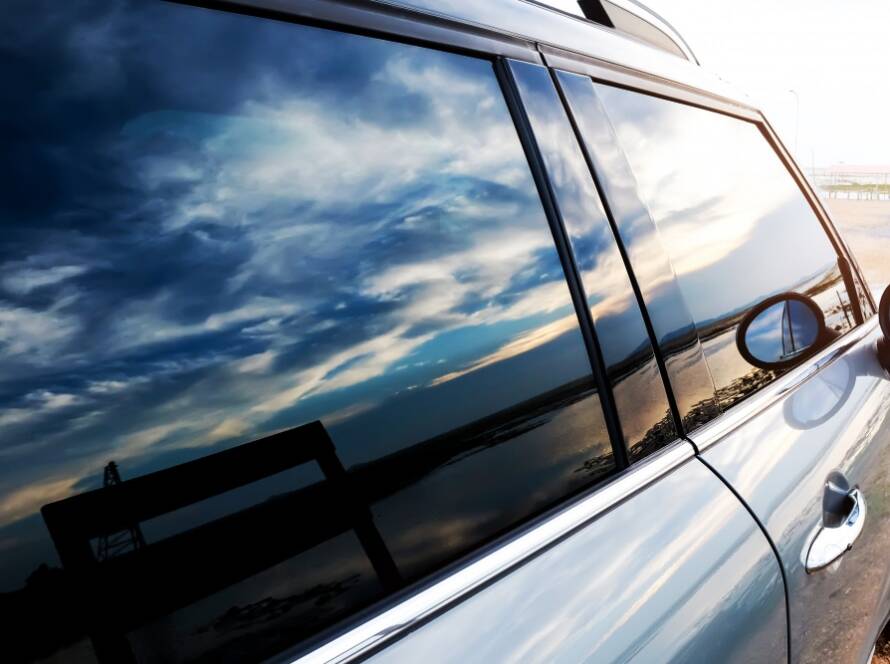Table of content
- Introduction: Why Tint Longevity Matters
- Why Do Window Tints Fade?
- Types of Car Window Tints and Their Longevity
- The Importance of Legal Tint Limits
- Signs Your Car Tint Needs Replacement
- Tips for Maintaining Car Window Tinting
- Why Quality Matters
- Frequently Asked Questions (FAQs)
- Final Thoughts: Protecting Your Tint Investment
Why Tint Longevity Matters
Auto tinting is one of the most popular upgrades car owners invest in, and for good reason. Car window tinting enhances your vehicle’s privacy, reduces heat, and adds a sleek, stylish touch. However, a common concern is whether car tints fade over time. More importantly, how can you ensure your tinted windows stay effective and appealing for as long as possible?
This guide will address these concerns, providing an expert breakdown of why window tints lose their luster, the types of tints available, and the steps you can take to protect your investment.
Whether you’re new to car tinting or looking to replace an old film, this post will help you make confident and informed choices.

Why Do Window Tints Fade?
Before exploring solutions, it’s key to understand what causes window tints to fade. Several factors influence the longevity of car tints, including:
UV Exposure
Sunlight and ultraviolet (UV) rays are the leading culprits of tint fading. Standard films with dye are particularly vulnerable, as extended UV exposure breaks down their coloring, leading to discoloration and reduced effectiveness over time.
Material Quality
Not all car tints are created equal. Lower-quality tints may be budget-friendly but are more prone to fading and wear. Premium films, made with advanced materials like carbon or ceramic, resist fading better and can maintain their appearance for years.
Environmental Conditions
Climate plays a major role. Vehicles exposed to harsh sunlight, heat, or humidity for prolonged periods will experience faster tint degradation. This is especially important to bear in mind if you live in warmer regions.
Cleaning Practices
Improper cleaning can also damage tints. Using harsh chemicals, abrasive tools, or ammonia-based cleaners can cause discoloration, peeling, or scratches. Proper car care makes a significant difference in maintaining tint durability.
Knowing these factors can help you choose a window tint and care routine that prolongs performance.

Types of Car Window Tints and Their Longevity
When selecting a car tint, understanding the available materials is essential. Here’s an overview of common options and how they stack up in terms of durability and performance:
Dyed Film
Generally the most affordable option, dyed films use layers of dye to reduce glare and heat. While effective initially, these films tend to fade over time due to exposure to sunlight. Dyed tints are best for those on a budget but require extra care for longevity.
Metalized Film
Metalized tints incorporate tiny metallic particles that strengthen the film while providing excellent heat rejection. They’re more robust than dyed films but may interfere with electronic signals, such as GPS and cell reception.
Carbon Film
Carbon tints are a step up in performance and style. The carbon particles embedded in the film effectively block infrared light, reducing heat while ensuring your car’s interior stays cooler. They boast a sleek, black appearance and resist fading better than dyed or metalized films.
Ceramic Film
Known as the gold standard in car tinting, ceramic films combine long-lasting durability with superior heat and UV rejection. This advanced material does not interfere with electronics, making it a top choice for long-term protection and comfort.
Crystalline Film
Designed for maximum light transmission with minimal heat and UV rays, crystalline films are perfect for those who want to maintain visibility while enjoying high-performance heat rejection. Despite their lighter appearance, they effectively block out up to 97% of infrared light, allowing you to have both clarity and protection.
When choosing a tint, always consider its lifespan and how it aligns with your needs and budget.

The Importance of Legal Tint Limits
Before committing to a specific car tint, it’s crucial to understand your state’s legal tint limits. Laws vary across regions and dictate how dark or reflective your windows can be. Violating these laws may result in fines or the removal of your tint. For example, many states specify the percentage of visible light transmission (VLT) that your rear, side, or front windows must allow.
Check your local regulations to ensure compliance while still reaping the functional and aesthetic benefits of car tinting.

Signs Your Car Tint Needs Replacement
Even well-maintained tints won’t last forever. Here are indicators that it may be time to upgrade your car window tinting:
- Discoloration
- Fading that turns darker tints into a purple or hazy shade is a telltale sign of UV damage.
- Bubbling or Peeling
- Bubbles mean the adhesive layer is failing, while peeling can be both unsightly and detrimental to function.
- Reduced Heat and UV Rejection
- If you notice your car interior getting hotter or the tint feels ineffective, it has likely lost its protective abilities.
Replacing worn-out tints ensures your car remains visually appealing and protected.
Tips for Maintaining Car Window Tinting
Proper maintenance significantly improves tint longevity. Here’s how to keep your investment in top condition:
- Use Non-Ammonia-Based Cleaners
- Stick to solutions designed for auto tinting or a mild soap-and-water mixture when cleaning.
- Employ Gentle Tools
- Avoid abrasive sponges or bristle brushes. Opt for microfiber cloths to prevent scratches.
- Park in the Shade
- When possible, park your vehicle in shaded areas or garages to reduce UV exposure and heat.
- Address Damage Early
- Small scratches or bubbles can worsen over time. Consult professionals to fix minor issues promptly.
- Schedule Routine Checkups
- Periodic inspections by a professional tinting service can help spot premature wear or fading.

Table of Contents: Preventing Tint Fading & Tint DurabilityWhy Quality Matters
When it comes to car window tinting, quality is everything. Beyond just enhancing your vehicle’s aesthetics, a high-quality tint protects you from harmful UV rays, reduces interior heat, and can even improve road safety by minimizing glare. Investing in premium tints ensures durability, compliance with legal limits, and long-lasting benefits.
At SFG Wraps, we’re passionate about delivering exceptional auto tinting solutions tailored to your car’s needs. Our team uses only the finest materials to ensure superior results, from installation to long-term performance.
Frequently Asked Questions (FAQs)
Q: Do window tints fade over time?
A: Yes, window tints can fade due to prolonged exposure to UV rays, heat, and environmental factors. The rate of fading depends on the quality of the tint and maintenance practices.
Q: How long does it take for window tint to fade?
A: The lifespan varies. High-quality tints like ceramic can last for many years without noticeable fading, while lower-quality dyed tints may start to fade within a few years.
Q: What can I do to prevent my window tint from fading?
A: To prevent fading, choose high-quality tint films, ensure professional installation, use UV-protective coatings, park in the shade, and maintain your windows regularly.
Q: Can I clean my tinted windows immediately after installation?
A: No, it’s recommended to wait for the tint to fully cure before cleaning, which typically takes 3-5 days but can extend up to 30 days depending on conditions.
Q: What cleaning products should I avoid on tinted windows?
A: Avoid ammonia-based products, bleach-based solutions, and any products containing alcohol or high acidity levels, as they can damage the tint.
Final Thoughts
Choosing the right car window tint and maintaining it with care will keep your ride stylish, functional, and legally compliant for years to come. Whether you prefer the budget-friendly dyed film or the long-lasting ceramic option, take time to weigh the pros and cons of each material. Don’t forget to follow maintenance best practices to protect your investment.
Looking to elevate your car’s appearance and performance with high-quality window tinting?
Contact SFG Wraps today and experience craftsmanship and expertise like never before. Don’t just tint your windows; transform your car.


